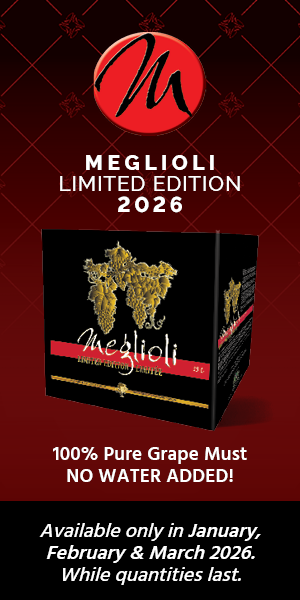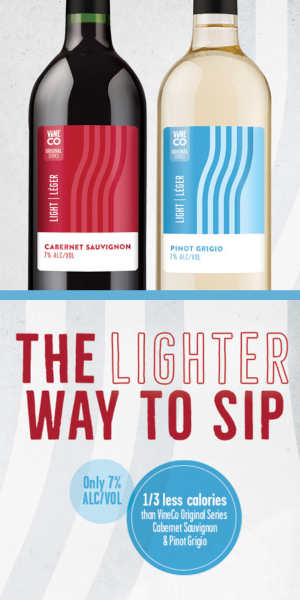As I started working on this story, a surprising question occurred to me: “What makes wine white?” “The color” seems obvious when you look at a restaurant wine list or walk up to the bar at a wedding reception, but for a technical column like this, I needed to dig a bit deeper. In Knowing and Making Wine, French wine scientist Emile Peynaud says, “In the very first place the great distinction between vinifying red and vinifying white wine is the absence of any extraction.” The conclusion is that skins, seeds, stems, and pulp play no role in the making of white wine; it is purely the fermented white juice of grapes. Even Peynaud acknowledges, however, that things are not so simple. In my own winemaking I often follow a practice he considers among “rare exceptions” in which crushed white grapes are left in contact with skins, pulp, and sometimes enzymes, for a period of extraction prior to pressing. So it is not just lack of extraction that makes wine “white.”
If skin contact is allowed with red or black grapes, anthocyanin color compounds rapidly join the party, resulting in pink or, ultimately, red wine. But if a red grape variety has white juice (and most do), that juice can be separated from the skins, resulting in a colorless-to-pale-pink juice for fermentation as a white wine. While some famous “whites” like white Zinfandel are actually pink-colored blush or almost rosé wines, the techniques employed can go a long way toward making a beverage any enophile could acknowledge as white wine. Perhaps the most widely made white or extremely pale pink from red grapes is Champagne or blanc de noirs sparkling wine. Almost always made from one or a combination of Pinot Noir and Pinot Meunier, Champagne has a long history and excellent market acceptance. The desirable characteristics of blanc de noirs sparkling wine include the longer aftertaste described by Jon Iverson in Home Winemaking Step by Step. These, and other white wines made from red grapes, may also show a fuller mouthfeel than most whites from white grapes, as well as hints of red berry aromas and flavors that come through in the finished product despite the lack of pigment.
To get the unique, fruity, full-bodied character of a white wine made from red grapes requires a variety of techniques and a series of decisions from the home winemaker. If you take these to heart, they can also serve you in making some other similar wines. Blush and rosé wines may use the same processes, adding only some deliberate skin time after crushing to extract color. Some traditional “white” grapes are prone to color development concerns and can benefit from these techniques as well. Sauvignon Blanc and a few others have a tendency to “pink” on exposure of the juice to air. Grapes like Gewürztraminer and Pinot Gris/Grigio are often more bronze than white or green and can readily impart pale pink color to a wine under ordinary white winemaking conditions. Steps for white-from-red can help make these wines more appealing.
Your first white-from-red decision is selection of the grape variety. In his book Techniques in Home Winemaking, Daniel Pambianchi mentions red varieties suitable for white winemaking a couple of times. First, not surprisingly, is Pinot Noir, already well known for use in blanc de noirs sparkling wines. His table of grape varieties notes that Syrah can be used for a variety of wine styles, including white. Later he adds Gamay and Grenache. In most cases, a less-intense red variety will work best, but the white winemaking techniques can be applied to any grapes that have white flesh and juice, only leaving out red-fleshed varieties like Alicante Bouschet. Very intensely colored grapes, such as Petite Sirah, even with white juice, will almost certainly pick up some pink color even when carefully made as a white wine. Concentrates cannot be used for this kind of project as those grapes have been vacuum macerated and colored anthocyanins are already in the mix. Frozen must will not work either, since those are typically crushed before freezing and will already have macerated sufficiently to transfer too much color. For your white from reds, look to whole clusters of fresh grapes.
If you can, arrange for your grapes well in advance. For white winemaking, your red grapes should exhibit picking parameters in line with conventional white grapes. That will mean sugar levels lower than many reds and acid levels that are higher. Ideally, these grapes will be somewhere in the range of 19 to 22 °Brix to achieve a final alcohol level (in a dry wine) of about 10.5 to 12% alcohol by volume (ABV). Look for a total titratable acidity level (TA) of about 0.7 to 0.9% (7 to 9 g/L). Train your picking crew thoroughly and then pick very gently. Shallow picking bins taken directly to the press will allow unbroken grapes for processing. If you pick into a deep bin or transport the grapes a long distance, you are likely to get some skin breakage and unintended maceration, with its accompanying color extraction.
For a truly white wine from red grapes, do not crush. Go directly to whole-cluster pressing. For commercial blanc de noirs production, Peynaud describes horizontal screw presses specifically designed to avoid breaking up the pomace. Those models are designated Champenois or Champagne-style. At home, the typical ratcheting basket press is difficult to use for whole clusters because of the cushioning provided by the deep bed of grapes, but can be done if the volume of grapes is relatively small. However, you will be much better off with a water-filled bladder press. These presses consist of a vertical cylindrical stainless steel cage containing a heavy rubber bladder. A garden hose is connected to a fitting at the bottom. After gently placing whole clusters into the annular space between the bladder and the basket, fasten down the iron lid on top and begin inflating with water. The typical domestic water pressure in the range of 35 to 70 pounds per square inch (psi) (241 to 483 kPa) should be enough pressure to pop the berries and release the white juice. To achieve better flow out of the press, you may want to layer in a filter aid like rice hulls every few inches as you fill the press. Collect fractions of the juice as you go along so you can isolate the press-run juice if it begins to show too much color.
As with typical white wines, keep things cool and avoid oxidation. Pick under cool conditions and press before the grapes warm up too much. Immediately funnel the juice into full narrow-mouth containers like carboys or stainless steel tanks. Sulfite the juice to about 50 mg/L (ppm) as you fill the containers. Keep the juice cool (less than 55 °F/13 °C) and settle for up to 24 hours. Rack the juice into clean, sanitized narrow mouth containers that are about 3⁄4 full and pitch your yeast, continuing with cool temperatures.
If your juice has too much color as pressed, you can decolorize it a bit before racking and pitching yeast. While bentonite will settle the fruit lees and remove some color, a much better color removal is achieved with PVPP (polyvinylpolypyrrolidone, available under the product name Polyclar). This synthetic molecule reacts with polyphenolic compounds while its rigidity and large size make it more effective on small targets like anthocyanins (color compounds) instead of larger molecules like tannins. Add PVPP powder directly to the juice at a rate of about 1 g/gallon (25 g/hL), stir gently, and settle with the fruit lees. (PVPP will work on the pinking color of Sauvignon Blanc and the bronze hue of Pinot Gris or Gewürztraminer also.)
For yeast choices, choose a strain that emphasizes white wine features like bright, fruity character and preservation of acidity. Although it is a red wine strain, I have been very happy with the fruity character of Enoferm CSM from Scott Laboratories. Other good choices from Scott include Enoferm M2 and Lalvin EC1118 (Prise de Mousse) or Viniflora Harmony from Gusmer or Red Star Côte des Blancs from many suppliers. Be sure the strain you select will ferment successfully at the cool temperature you select. Because cooler temperatures are somewhat difficult for yeast growth, prepare a vigorous pitch using a rehydration nutrient like Go-Ferm for a quick start and a strong finish. Follow your usual white wine nutrient program.
Rack the wine to topped up containers and sulfite as soon as primary fermentation is complete. Keep cool and sulfited throughout the aging period and fine before cold stabilizing. Fining must be done before cold stabilization as it may alter tartrate stability. Rack only once or twice more to avoid excessive air exposure, then filter for the brilliant look of a white. Aging is usually fairly short; bottle no later than April of the year following fall harvest.
Now that you have a young white wine made from red grapes, you still have some decisions to make. Because it has been produced under cool conditions, it will likely contain some carbon dioxide. For a fresh “lift” to the wine, consider bottling it like that rather than degassing. Iverson notes that he sometimes adds a bit of blanc de noirs still wine from Pinot Noir to other white table wines like Sauvignon Blanc and Sémillon. I have added Pinot Noir to Chardonnay with good effects. You will often find fuller mouthfeel and a fruitier profile, even with just 5 to 10% blanc de noirs added to a white variety. Blended or straight, your very own “blanc de noirs” offers a unique wine to share with friends and family.






